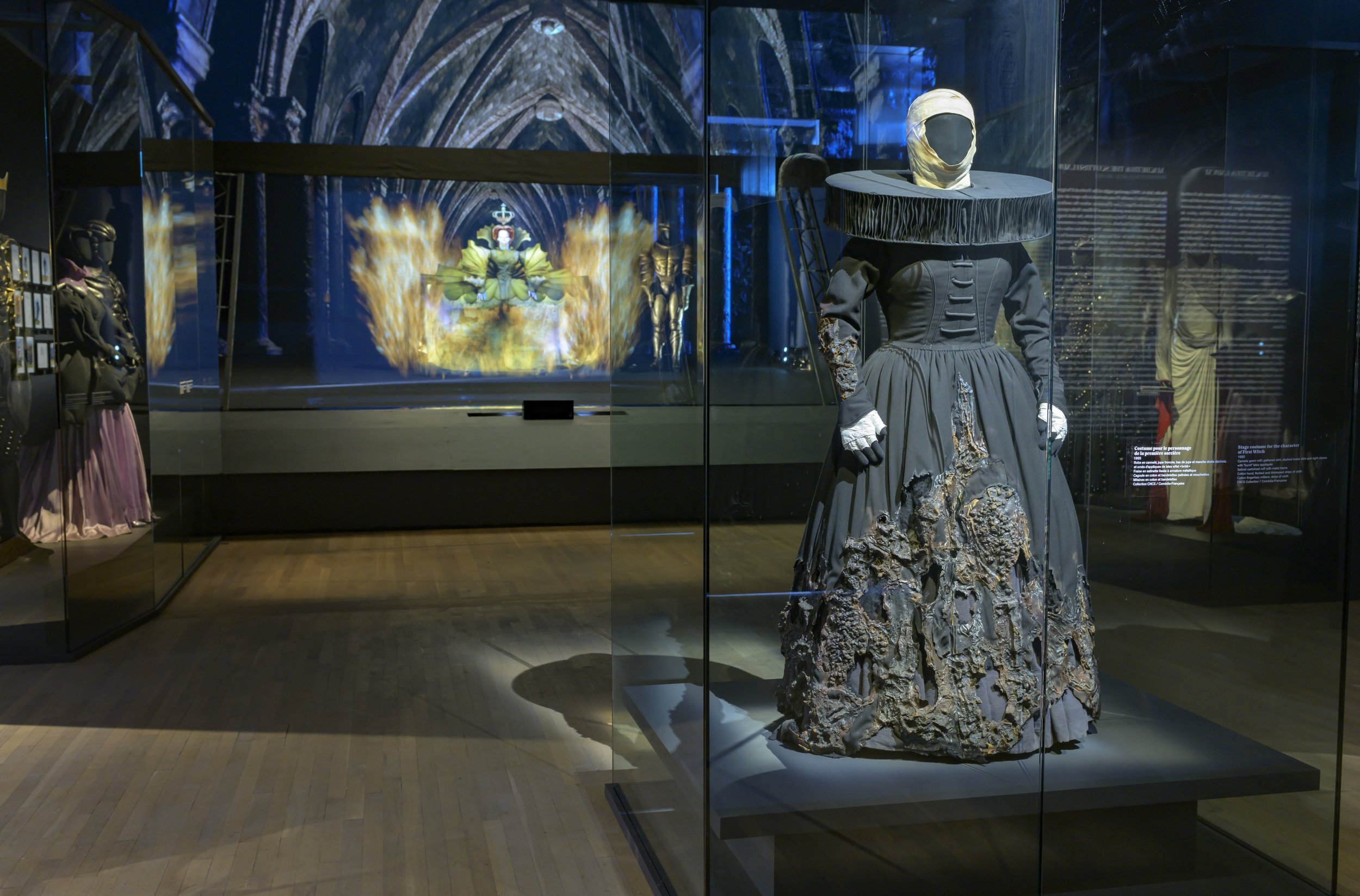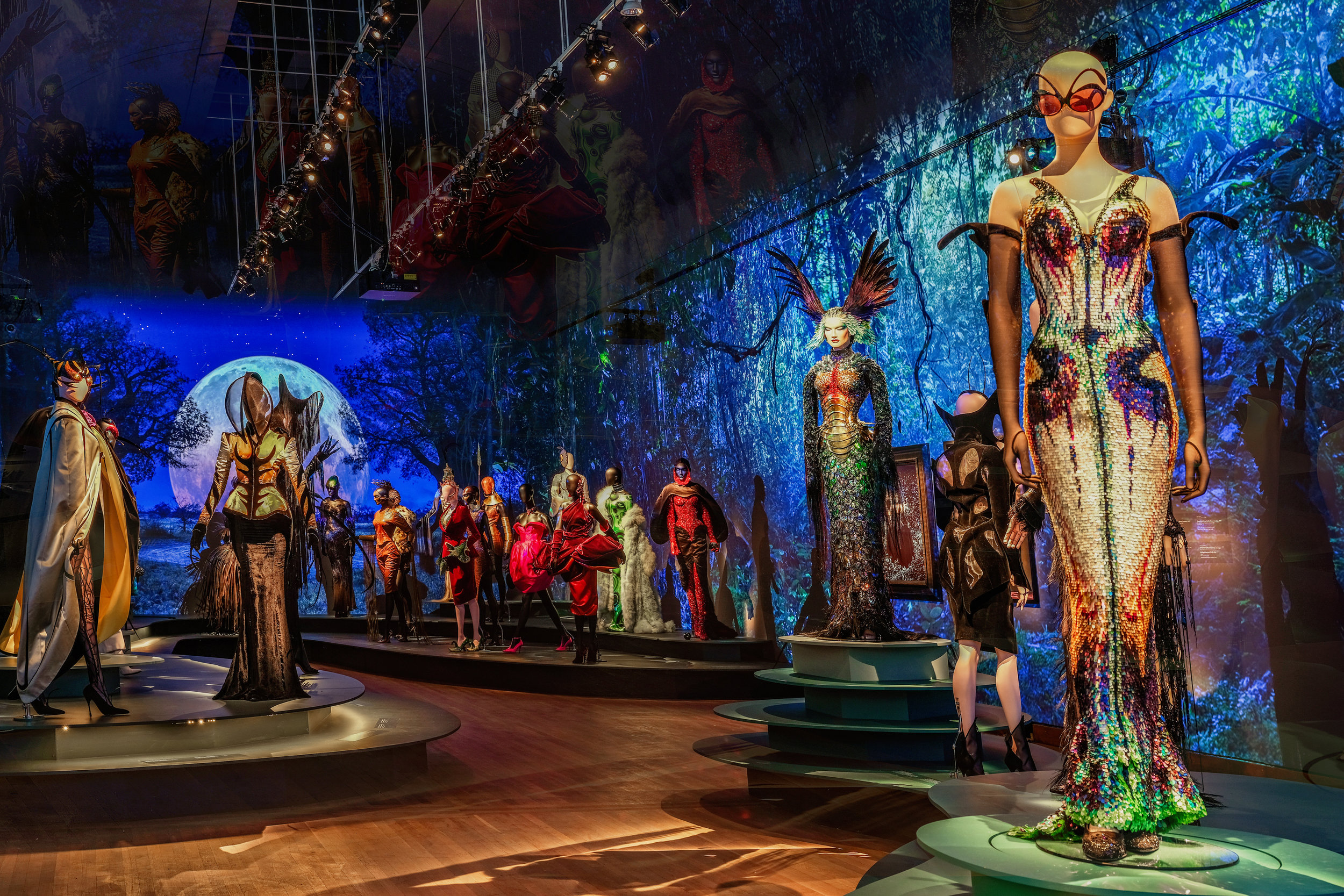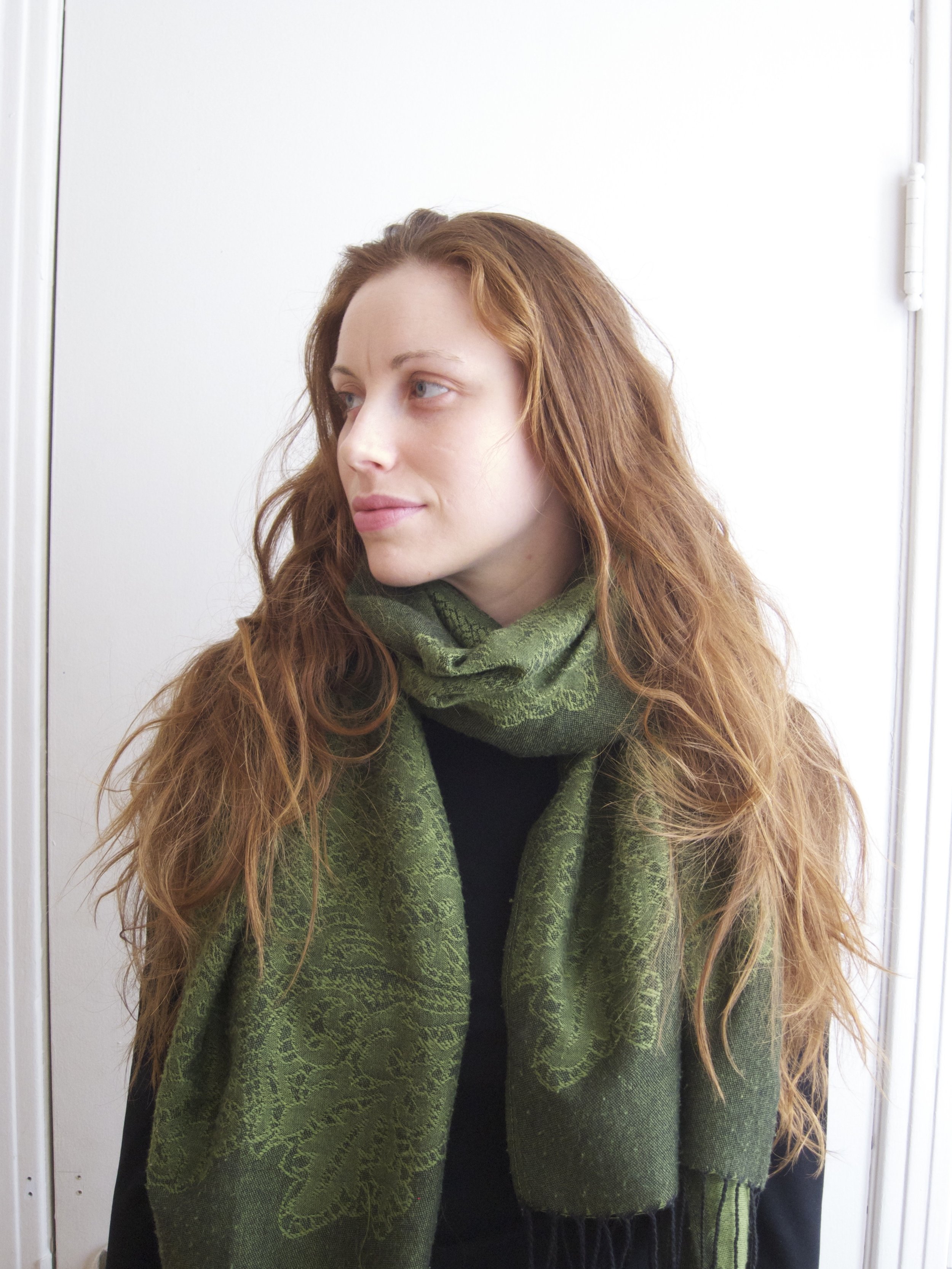Volume 2, Issue 1, #8 - 2019
The Phantasmagoric World of Thierry Mugler
By JULIA SKELLY
DOI: 10.38055/FS020108
MLA: Skelly, Julia. “The Phantasmagoric World of Thierry Mugler.” Fashion Studies, vol. 2, no. 1, 2019, 1-13. https://doi.org/10.38055/FS020108.
APA: Skelly, J. (2019). The Phantasmagoric World of Thierry Mugler. Fashion Studies, 2(1), 1-13. https://doi.org/10.38055/FS020108
Chicago: Skelly, Julia. “The Phantasmagoric World of Thierry Mugler.” Fashion Studies 2, no. 1 (2019): 1-13. https://doi.org/10.38055/FS020108.
Abstract:
This review of Thierry Mugler: Couturissime approaches the exhibition through a feminist art-historical lens and attends to the various ways that both Mugler’s clothing and the Montreal Museum of Fine Arts’ curatorial team has framed and constructed the powerful, threatening woman as a complex figure who is hard, cold, sensual, strong, hard-working, and spectacular, among many other valences. The exhibition, which had its world premiere at the MMFA in March 2019, is organized as a fashion opera in six acts, and each room illuminates disparate yet interconnected parts of Mugler’s body of work: his costumes for a 1985 performance of Macbeth in Paris; the decadent and excessive clothing worn and worshipped by past and present celebrities; the black-and-white power dressing that Helmut Newton and others have canonized in fashion photography; the astounding creations inspired by insects and reptiles; and finally, the cyborgian fembots that have been presented in both Vogue and music videos. The inclusion of photographs and videos — not a new strategy in blockbuster fashion exhibitions — is essential to the success of Thierry Mugler: Couturissime, as they reveal that while these clothes are works of art, they were made to be worn and mobilized. Although not explicitly a feminist exhibition, for viewers who are looking for feminist, political inspiration wherever they can find it Mugler’s warrior women and formidable clothing — whether made of metal, latex or feathers — provide a powerful reminder that clothing is just one of the many weapons in our arsenal.
Keywords:
Thierry Mugler
exhibition review
spectacle
photography










